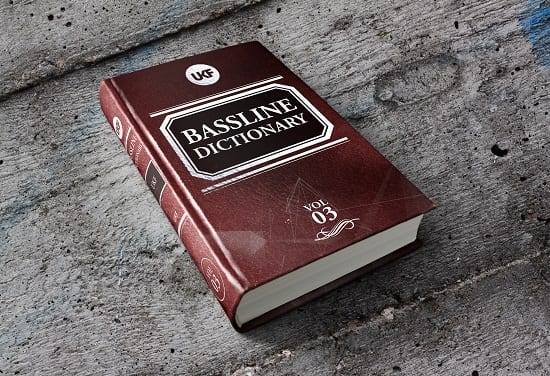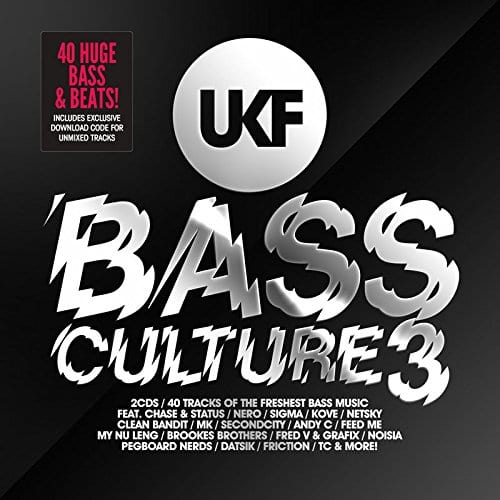We’ve learnt the lingo of both D&B and dubstep basslines. Now we’re looking further afield to the less genre-specific low-end sounds UKF has celebrated over the years.
Crank up your speakers as we guide you through our third and final Bassline Dictionary. By the end of this session you’ll be able to navigate the UKF Music world with a trusty compass that always points to bass and some essential phrases in production-geek language. Enjoy!
Analogue Onion Bass
Analogue-y and super stacked with layers. It sounds simple and potent but under the surface it is so complex it will make your eyes water.
Example: Nero – Satisfy
https://www.youtube.com/watch?v=LHFevxf3IKA
This type of bass has more layers than you could imagine. It has a feel of an old school techno lead, with the white noise of house riser and the low end that would rival the weight of a ten-tonne truck.
You could start with an analogue style synth to get a pulse wave; this is like a square wave but pushed to one side. Then you will need a super saw, this can be found in a Rowland SH-201 hardware synth, but any detuned saw waves would suffice. Layer this lot with some white noise to add top presence and you will have the basic sound. Get the bass to move by automating a low pass filter while you play your driving bassline.
Military Grade
Turning the night sky a deeper shade of crimson.
Example: Millions Like Us – Time’s Up
Now we are delving into bass so deep that our previous training becomes irrelevant. We are Apocalypse Now; we never get out of the boat.
The moment the bass drops is like seeing Marlon Brando for the first time and being plunged into his world. The light we have is borrowed from rebel flares; the only thing getting us through the night is the promise of the smell of napalm in the morning.
Starting this bass could be created using a triangle wave to get a pure subby tone we hear in the break down, using triangle waves instead of the classic sine means that you get a little extra harmonics for free. So when you add filters to get the ‘warb-warb’ sound, there is something in the mid-range for the filters to bite on.
This needs to be combined with the grinding mechanical animal we hear in the main drop. This sound needs major movement; it is achieved by using the glide function available on most synths. As you move from the low bass to the higher notes it doesn’t jump from note to note, it glides between them. With the resonance cranked and a little distortion this movement sounds militant.
Palindrome Bass
This bass sounds sick in both directions; PULL UP!
Example: My Nu Leng – Masterplan
If you want to create maximum impact in a track sometimes the simplest techniques are the best, such as introducing the humble reverse function. This is an approximation of what might have happened in the studio during the creation of this bass…
“What’s it like if you reverse the bass mids?” The studio fell quiet; there was no answer to the question. Phlegmatically, Fox moved to the vocal booth and drops his bars. That idea is the master plan.
To create the sub bass in this track it needs to be hard hitting. Playing your kick drum at the same time as the sub bass creates this strong sonic impact. Approaching the reverse section is a little more complex. Try creating a distorted version of your original bass and exporting this as a new file. Use the reverse function in you sequencer and a band pass filter to leave only the mid-range rip. This new sound used rhythmically is guaranteed to keep the crowd enthralled.
Perfect Moment Bass
Capturing the moment just before a snowflake turns to water.
Example: Buku – No One Does
Dedication is needed when you are trying to create a bass this precise. Distortion is an essential tool for making basses, yet you have the perfect balance. Knowing what distortion you like personally as a producer is the key.
To create a bass in this style you need to get a classic 808-kick sample then add distortion. It seems very simple, but the trick to making it amazing is finding the perfect sweet spot. If you add too little distortion you bass will just sound smooth not provide energy. Push too far and your bass losses its dynamics and sounds like the lifeless farting of a broken accordion.
But when you hit the sweet spot between the two, the low end will be round and fat combined with the rich crunch from digital distortion to bring the energy, you will have found the sweet spot. Balance, poise, restraint, fearless simplicity and energy embodied beautifully in bass.
Ray Keith Revival Bass
Calling all renegades, this one is for the nostalgia crew.
Example: Jus Now – Tun Up (Dismantle Remix)
There is something special about a track that feels familiar on the very first play. Picture your favorite club, the DJ dropping a track exclusively for you, the MC and crowd all going mad. This bass has the ability to take you there using the power of modernised nostalgia.
To create this bass you will need to be brave, as what we discuss will be borderline blasphemy to the purists out there… You need to sample a classic track; this will create the instant feeling of nostalgia. With the sample in Kontakt 5 you can choose different sampling algorithms, the parts of interest to us are the Tone Machine and Formant functions. This piece of wizardry allows you to change the tone of a piece of audio without changing the pitch. In this instance, giving an old school sounding bass a lower fatter tone. Finally the wobble movement comes from the original modulation now magnified by the re-sample process.
That concludes our final bass journey with a sub-sonic bang. You now have the basic training to lead your own bass mission to find bass that will shake the solar system. We are keen to know your ideas about how these basses were crafted. Leave your comments below about your favorite basses and your bass creation process.
All of these examples – plus 35 more! – can be found on UKF Bass Culture 3. Out now!
Support UKF Bass Culture 3:



